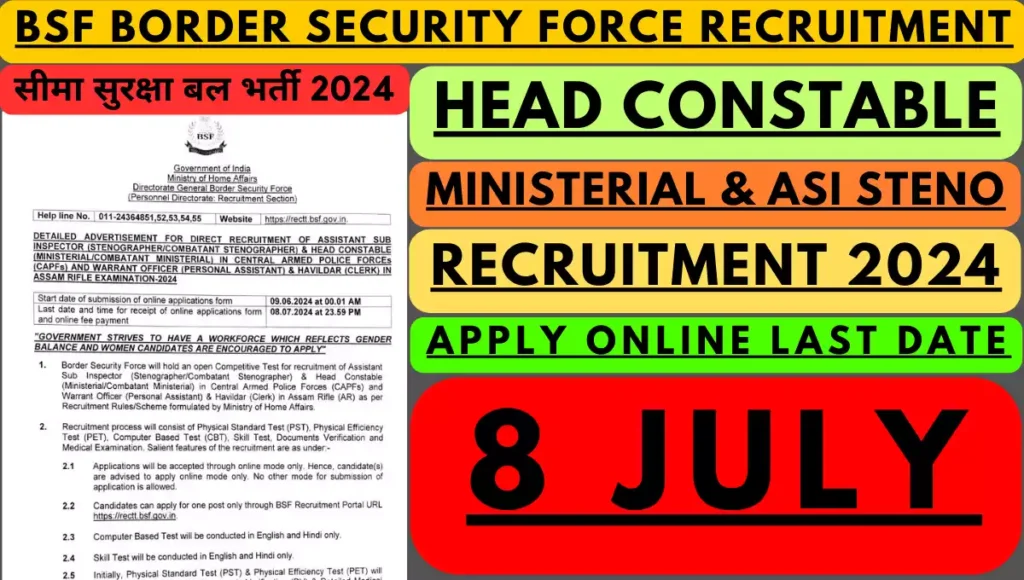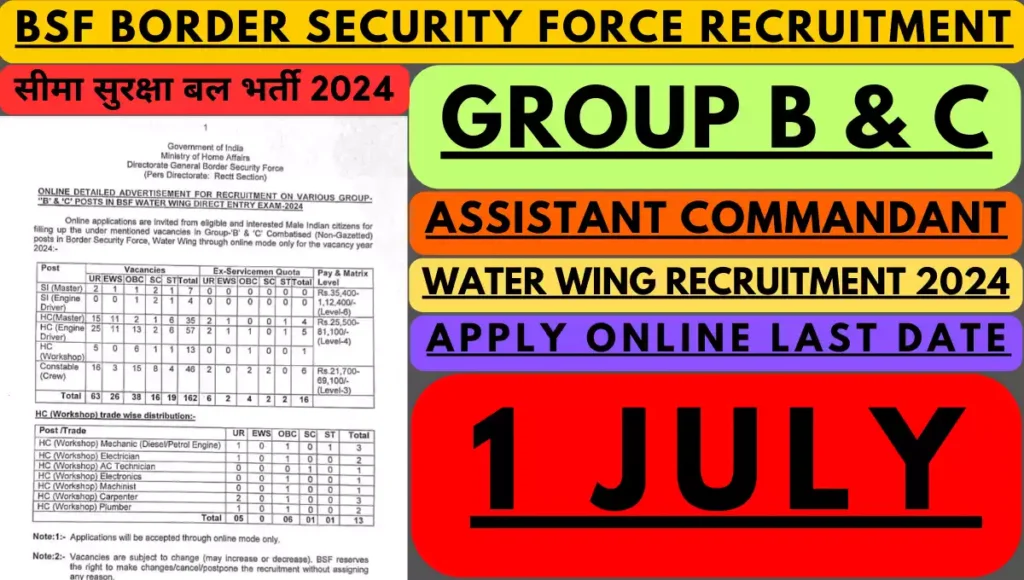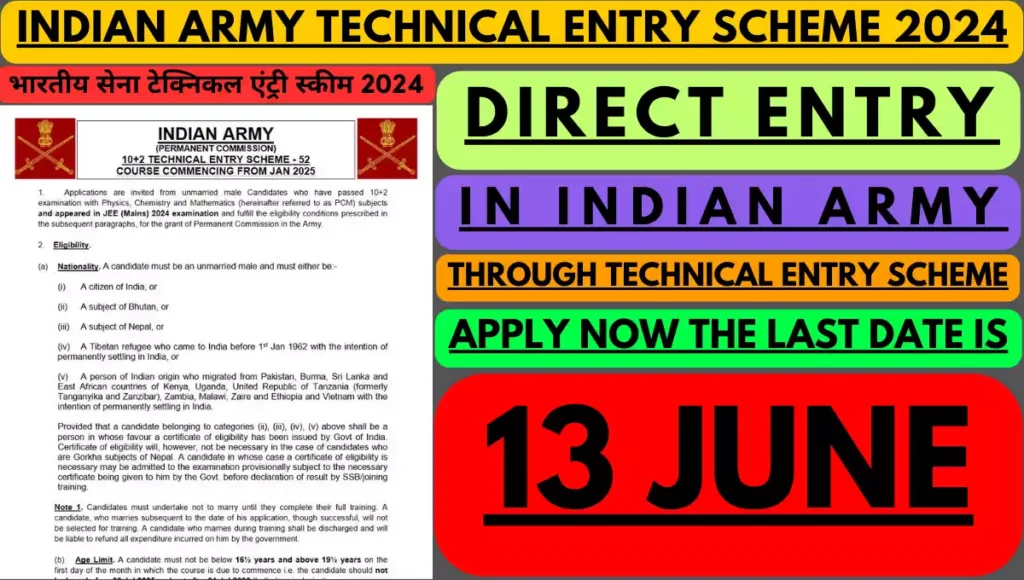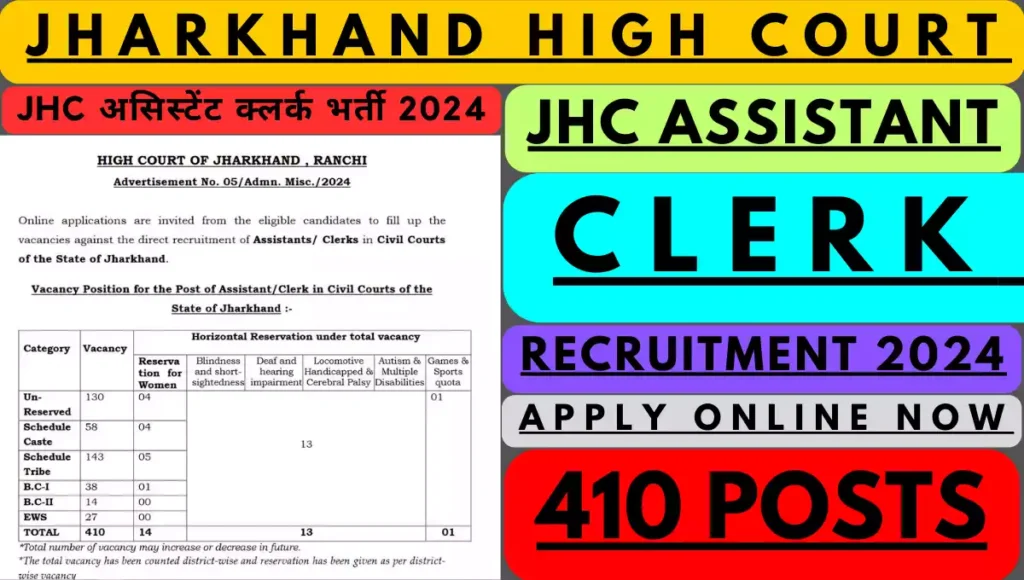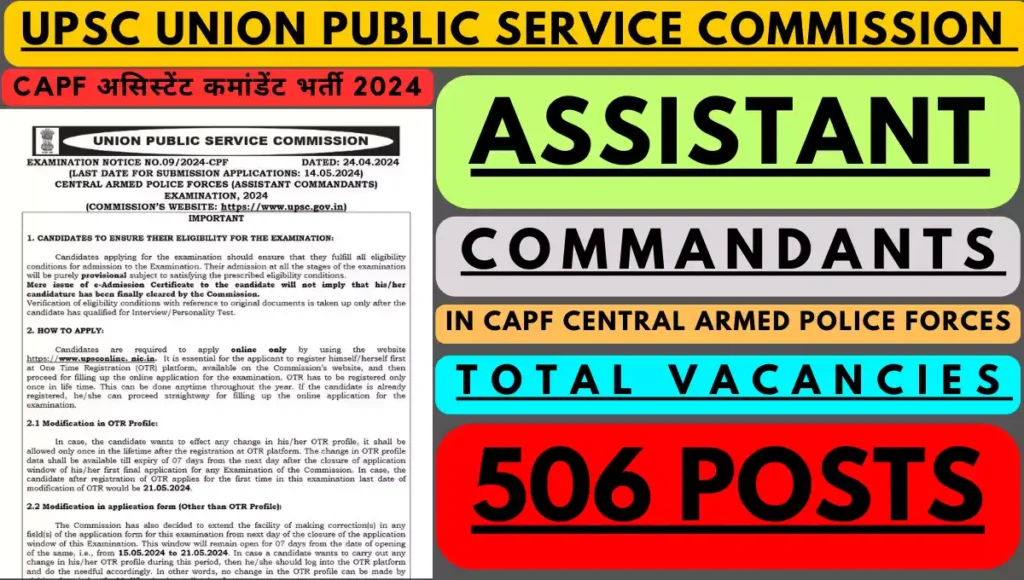Uttar Pradesh Police Recruitment & Promotion Board UPPRPB has released the notification for the recruitment of Computer Operator and Programmer for UP Police Department. The number of requirements are 985 Posts. Interested Male and Female candidate can apply online from 07 January 2024 to 28 January 2024. Read all the details like syllabus of examination, pay scale, eligibility criteria, age limit and selection procedure carefully before online application.

UP Police Computer Operator & Programmer Recruitment 2024
| Recruiting Organization | Uttar Pradesh Police Recruitment & Promotion Board |
| Post Name | Computer Operator and Programmer |
| Total Vacancy | 985 Posts |
| Application Mode | Online |
| Official Website | UPPRPB Official Website |
| New Vacancies 2024 | Apply Here |
Important Dates
| Remember | Dates |
| Application Begin | 07/01/2024 |
| Last Date to Apply Online | 31/01/2024 |
| Last Date for Correction in Online Application | 02/02/2024 |
| Exam Date | Declare Soon |
| Admit Card Availability | Some Days Before Exam |
| Date Extension Notification for Computer Operator and Programmer | |
Application Fees
| Categories | UP Police Computer Operator and Programmer Application Fees |
| General / OBC / EWS | 400/- |
| SC / ST | |
| Female (All Categories) | |
| Mode of Payment | 1. Online Payment (through Debit Card, Credit Card and Net Banking) 2. E-Challan (The Payment also could be made through offline by generating e-challan after submitting the online application). |
Age Limits as on 01/07/2023
| Name of Post | Age Limit | Age Relaxation |
| Computer Operator Grade A | 18 – 28 Years | SC / ST / OBC – 5 Years Ex-Serviceman – 3 Years |
| Computer Programmer Grade 2 | 21 – 30 Years | |
| *Check full Notification to know more about Age Relaxations terms. | ||
Bihar Vidhan Sabha Sachivalaya
Security Guard / DEO / Driver / Office Attendant Vacancy 2024
UP Police Computer Operator and Programmer Salary
| Name of Post | Pay Band |
| Computer Operator Grade A | Rs. 5,200 – 20,200/- ( Grade Pay – 2,400/- ) |
| Computer Programmer Grade 2 | Rs. 9,300 – 34,800/- ( Grade Pay – 4,600/- ) |
UP Police Computer Operator and Programmer Eligibility
| Name of Post | Total Posts | UP Police Computer Operator and Programmer Eligibility 2024 |
| Computer Operator Grade A | 930 | 10+2 / Intermediate OR Equivalent passed with PCM as a subjects and O Level Exam Passed from DOEACC / NIELIT OR Diploma in Computer Application / Electronics Engineering / IT |
| Computer Programmer Grade 2 | 55 | Bachelor Degree from any stream with A Level Examination of DOEACC / NIELIT OR Bachelor Degree from B.Sc in Computer Science / Electronics / IT with PGDCA |
UP Police Computer Operator Exam Pattern
| Name of Exam | Uttar Pradesh UP Police Computer Operator Grade A | Total Marks | Total Questions | Duration |
| PART – A Computer Based Written Test | I) General Knowledge II) Mental Aptitude III) Logical Reasoning IV) Computer Science | 200 Marks | 160 Questions | 2 Hours (120 Minutes) |
| PART – B Typing Test | Typing Speed – 25 WPM in Hindi & 30 WPM in English with 85% accuracy | Nature of Examination Qualifying | ||
| Minimum Percentage to Qualify Computer Based Written Test is 40% out of 200 Marks | ||||
UP Police Computer Operator Syllabus
General Knowledge (सामान्य ज्ञान)
i) सामान्य विज्ञान
ii) भारत का इतिहास
iii) भारतीय संविधान
iv) भारतीय अर्थव्यवस्था एवं संस्कृति
v) भारतीय कृषि
vi) वाणिज्य एवं व्यापार
vii) जनसंख्या
viii) पर्यावरण एवं नगरीकरण
ix) भारत का भूगोल तथा विश्व भूगोल और प्राकृतिक संसाधन
x) उ०प्र० की शिक्षा संस्कृति और सामाजिक प्रथाओं के सम्बन्ध में विशिष्ट जानकारी
xi) उ०प्र० में राजस्व
xii) पुलिस व सामान्य प्रशासनिक व्यवस्था
xiii) मानवाधिकार
xiv) आंतरिक सुरक्षा तथा आतंकवाद
xv) भारत और उसके पड़ोसी देशों के बीच सम्बन्ध
xvi) राष्ट्रीय तथा अन्तर्राष्ट्रीय महत्व के समसामयिक विषय
xvii) राष्ट्रीय तथा अन्तर्राष्ट्रीय संगठन
xviii) विमुद्रीकरण और उसका प्रभाव
xix) साइबर काइम
xx) वस्तु एवं सेवाकर
xxi) पुरस्कार और सम्मान
xxii) देश / राजधानीं / मुद्रायें
xxiii) महत्वपूर्ण दिवस
xxiv) अनुसंधान एवं खोज
xxv) पुस्तक और उनके लेखक
xxvi) सोशल मीडिया कम्युनिकेशन
Mental Aptitude (मानसिक अभिरूचि)
i) Logical Diagrams
(तार्किक आरेख)
ii) Symbol-Relationship Interpretation
(संकेत-सम्बन्ध विश्लेषण)
iii) Perception Test
(प्रत्यक्ष ज्ञान बोध)
iv) Word formation Test
(शब्द रचना परीक्षण)
v) Letter and number series
(अक्षर और संख्या श्रृंखला)
vi) Word and alphabet Analogy
(शब्द और वर्णमाला में आंशिक समरूपता)
vii) Common Sense Test
(व्यावहारिक ज्ञान परीक्षण)
viii) Direction sense Test
(दिशा ज्ञान परीक्षण)
ix) Logical interpretation of data
(आंकड़ों का तार्किक विश्लेषण)
x) Forcefulness of argument
(प्रभावी तर्क)
xi) Determining implied meanings
(अंतर्निहित भावों का विनिश्चय करना)
Logical Reasoning (तर्कशक्ति)
i) Analogies
(समरूपता)
ii) Similarities
(समानता)
iii) Differences
(भिन्नता)
iv) Space visualization
(खाली स्थान भरना)
v) Problem solving
(समस्या को सुलझाना)
vi) Analysis judgement
(विश्लेषण निर्णय)
vii) Decision-making
(निर्णायक क्षमता)
viii) Visual memory
(दृश्य स्मृति)
ix) Discrimination
(विभेदन क्षमता)
x) Observation
(पर्यवेक्षण)
xi) Relationship
(सम्बन्ध)
xii) Concepts
(अवधारणा)
xiii) Arithmetical reasoning
(अंकगणितीय तर्क)
xiv) Verbal and figure classification
(शब्द और आकृति वर्गीकरण)
xv) Arithmetical number series
(अंकगणितीय संख्या श्रृंखला)
xvi) Abilities to deal with abstract ideas and symbols and their relationships
(अमूर्त विचारों व प्रतीकों तथा उनके सम्बन्धों से सामंजस्य की क्षमता)
Computer Science (कम्प्यूटर विज्ञान)
Introduction:
i) Computer History
ii) Evolution and Generation of Computers
iii) Organisation of Computer system
iv) Hardware
v) Software
vi) Peripheral Devices
vii) Algorithm
viii) Flowchart and Number system
Database Management System:
i) Data Organisation
ii) File Management System
iii) Database Concepts
vi) Relational Data Model and Basic Concept of Database
v) Popular Database Management System- Fox pro and Oracle with SQL etc.
PC Software and Office Automation:
i) Office System and Procedure
ii) The need for office automation
iii) Electronic Capture
iv) Storage
v) Graphics and Graphic User Interface
vi) Electronic Data Interchange.
Workplace productivity Tools:
i) Word Processing Tools
ii) Electronic spreadsheets
iii) Electronic presentation tools
iv) Microsoft Office (Word, Excel, Power Point, Access)
v) Open Office
vi) Using these tools in English and official Indian (Windows, Unix and Unicode Fonts)
vii) Exchange of Files across these platforms
Computer Networks:
i) Types of networks
ii) Network topology
iii) Risk assessment and security measures and security issues
iv)LAN – Local Area Network
v) MAN – Metropolitan Area Network
vi) WAN – Wide Area Network
The Internet:
i) Working with internet
ii) Uses of internet
iii) Search Engines
iv) E-mail
v) E-commerce
vi) E-banking
vii) E-learning
Emerging Technologies and Web Publishing:
i) Application Software
ii) Computer controlled devices
iii) Artificial Intelligence
iv) Mobile Computing
v) Green Computing
vi) Operating System Windows
vii) Unix/Linux
viii)HTML
ix) JavaScript
x) Banking and E-commerce application
Boolean Algebra:
i) Boolean operators
ii) Truth Tables
iii) Closure property
iv) Laws of Boolean Algebra
v) SOP
vi) POS
vii) Karnaugh map
viii) Application of Boolean logic.
Data Structures:
i) One and two dimensional arrays
ii) Stack and queue
UP Police Computer Programmer Grade 2 Exam Pattern
| Name of Exam | Uttar Pradesh UP Police Computer Programmer Grade 2 | Marks | Total Marks | Total Questions | Duration |
| PART – A Computer Based Written Test | I) Mental Strength II) Logical Reasoning III) Information Technology | 100 Marks | 200 Marks | 160 Questions | 2:30 Hours (150 Minutes) |
| PART – B Computer Based Written Test | IV) Computer Programming | 100 Marks | |||
| Minimum Percentage to Qualify Both the Tests are 40% out of 200 Marks | |||||
UP Police Computer Programmer Grade 2 Syllabus
Mental Aptitude (मानसिक अभिरूचि)
i) Logical Diagrams
(तार्किक आरेख)
ii) Symbol-Relationship Interpretation
(संकेत-सम्बन्ध विश्लेषण)
iii) Perception Test
(प्रत्यक्ष ज्ञान बोध)
iv) Word formation Test
(शब्द रचना परीक्षण)
v) Letter and number series
(अक्षर और संख्या श्रृंखला)
vi) Word and alphabet Analogy
(शब्द और वर्णमाला में आंशिक समरूपता)
vii) Common Sense Test
(व्यावहारिक ज्ञान परीक्षण)
viii) Direction sense Test
(दिशा ज्ञान परीक्षण)
ix) Logical interpretation of data
(आंकड़ों का तार्किक विश्लेषण)
x) Forcefulness of argument
(प्रभावी तर्क)
xi) Determining implied meanings
(अंतर्निहित भावों का विनिश्चय करना)
(xii) Codification
(संकेतीकरण)
(xiii) Letter and number coding
(अक्षर और संख्या संकेत)
Logical Reasoning (तर्कशक्ति)
i) Analogies
(समरूपता)
ii) Similarities
(समानता)
iii) Differences
(भिन्नता)
iv) Space visualization
(खाली स्थान भरना)
v) Problem solving
(समस्या को सुलझाना)
vi) Analysis judgement
(विश्लेषण निर्णय)
vii) Decision-making
(निर्णायक क्षमता)
viii) Visual memory
(दृश्य स्मृति)
ix) Discrimination
(विभेदन क्षमता)
x) Observation
(पर्यवेक्षण)
xi) Relationship
(सम्बन्ध)
xii) Concepts
(अवधारणा)
xiii) Arithmetical reasoning
(अंकगणितीय तर्क)
xiv) Verbal and figure classification
(शब्द और आकृति वर्गीकरण)
xv) Arithmetical number series
(अंकगणितीय संख्या श्रृंखला)
xvi) Abilities to deal with abstract ideas and symbols and their relationships
(अमूर्त विचारों व प्रतीकों तथा उनके सम्बन्धों से सामंजस्य की क्षमता)
Information Technology (सूचना प्रौद्योगिकी)
Logical Reasoning:
i) Space
(खाली स्थान भरना)
ii) Problem solving
(समस्या को सुलझाना)
iii) Analysis judgement
(विश्लेषण निर्णय)
iv) Decision-making
(निर्णायक क्षमता)
v) Visual memory
(दृश्य स्मृति)
vi) Discrimination
(विभेदन क्षमता)
vii) Observation
(पर्यवेक्षण)
viii) Relationship
(सम्बन्ध)
ix) Concepts
(अवधारणा)
x) Arithmetical reasoning
(अंकगणितीय तर्क)
xi) Verbal and figure classification
(शब्द और आकृति वर्गीकरण)
xii) Arithmetical number series
(अंकगणितीय संख्या श्रृंखला)
xiii) Abilities to deal with abstract ideas and symbols and their relationships
(अमूर्त विचारों व प्रतीकों तथा उनके सम्बन्धों से सामंजस्य की क्षमता)
Digital Logic:
i) Logic functions
ii) Minimization
iii) Design and synthesis of combinational and sequential circuits
iv) Number representation and computer arithmetic (fixed and floating point)
Computer Organization and Architecture:
i) Machine instructions and addressing modes
ii) ALU and data-path
iii) CPU control design
iv) Memory interface
v) 1/0 interface (Interrupt and DMA mode)
vi) Instruction pipelining
vii) Cache and main memory
viii) Secondary storage.
Programming and Data Structures:
Programming in C:-
i) Functions
ii) Recursion
iii) Parameter passing
iv) Scope
v) Binding Abstract data types
vi) Arrays
vii) Stacks
viii) Queues
ix) Linked Lists
x) Trees
xi) Binary
xii) search trees
xiii) Binary heaps
Algorithms:
i) Analysis
ii) Asymptotic notation
iii) Notions of space and time complexity
iv) Worst and average case analysis
v) Design: Greedy approach, Dynamic programming.
vi) Divide-and-conquer: Tree and graph traversals, Connected components
vii) Spanning trees
viii) Shortest paths
ix) Hashing
x) Sorting
xi) Searching asymptotic
xii) analysis (best, worst, average cases) of time and space
xiii) upper and lower bounds
xiv) Basic concepts of complexity classes P. NP
xv) NP-hard. NP- complete.
Compiler Design:
i) Lexical analysis
ii) parsing. Syntax directed translation
iii) Runtime environments
iv) Intermediate and target code generation
v) Basics of code optimization.
Operating System:
i) Windows Server
ii) UBUNTU
iii) UNIX Commands & Tools Processes
iv) Threads
v) Inter-process Synchronization
vi) Communication
vii) Concurrency
viii) Deadlock CPU scheduling
ix) Memory management and virtual memory
x) File systems
xi) I/0 systems
xii) Protection and security
Workplace productivity Tools:
i) Word Processing Tools
ii) Electronic spreadsheets
iii) Electronic presentation tools
iv) Microsoft Office (Word, Excel, Power Point, Access)
v) Open Office
vi) Using these tools in English and official Indian languages (Windows, UNIX and Unicode Fonts)
vii) Exchange of Files across these platforms
viii) GUI Development Tools
Databases:
i) ER-model
ii) Relational model (relational algebra, tuple calculus)
iii) Database design (integrity constraints, normal forms). Query languages (SQL)
iv) File structures (sequential files, indexing, B and B+ trees).
v) Transactions and concurrency control
vi) MySQL
vii) MS SqlServer with Advance Technique
viii) Mirroring
Information Systems and Software Engineering:
i) Information gathering
ii) requirement and feasibility analysis
iii) data flow diagrams, process specifications
iv) input/output design process life cycle
v) planning and managing the project
vi) design
vii) coding
viii) testing
ix) implementation
x) maintenance
Computer Networks:
i) ISO/OSI stack
ii) LAN technologies (Ethernet, Token ring)
iii) Flow and error control techniques
iv) Routing algorithms
v) Congestion control TCP/UDP and sockets IP (v4)
vi) Application layer protocols (ICMP, DNS, SMTP, POP, FTP, and HTTP)
vii) Basic concepts of Hubs
viii) Switches
ix) gateways and routers
x) Network security basic concepts of public key and private key cryptography
xi) digital signature
xii) firewalls
xiii) IPv4
xiv) IPv6
xv) Subneting
xvi) SAN (Storage Area Network)
xvii) Data centre and its architecture
xviii) Cloud Network and its securities
Web technologies:
i) HTML
ii) CSS
iii) XML
iv) basic concepts of client-server computing
v) ASP.Net
Computer Programming (कम्प्यूटर प्रोग्रामिंग)
Introduction:
i) History of Computing
ii) Future of Computing
iii) Trends in Programming Language
Programming Language:
i) C Language: Introduction to ‘C Language
ii) Conditional Statements and Loops
iii) Arrays
iv) Functions
v) Storage Classes
vi) Structures and Unions
vii) Pointers
viii) Self- Referential Structures and Linked Lists
ix) Recursion
x) Parameter Passing
xi) Scope. Binding. Abstract Data Types
xii) Stacks
xiii) Queues
xiv) Trees
xv) Binary Search Trees
xvi) Binary Heaps
xvii) Programming & Problem Solving Through ‘C’ Language
C++ with Object Oriented Programming:
i) Overview of Object Modelling
ii) Object and Dynamic Modelling
iii) Functional Modelling. System and Object Design
iv) Comparison of Existing Methodology
v) Programming Style in object Oriented Oriented
vi) Relational Data
vii) Base Object
viii) Object Diagram Compiler and distributed Design System
ix) An overview of C
x) Origin of C++
xi) Classes and Objects
xii) Arrays
xiii) Pointers and references
xiv) Functions and Operator Overloading
xv) Inheritance
xvi) Virtual Function and Polymorphism
xvii) C++ 1/0
xviii) System Basics
xix) C++ files 1/0
xx) Array based VO.
xxi) Templates and Generic Programming
xxii) Exception Handling
xxiii) Templates
Java:
i) Java Applets
ii) Graphics
iii) Graphical User Interfaces
iv) Exception Handling. Threads:
v) Java basics
vi) Java coding conventions
vii) Java API
viii) Garbage collection. 1/0 Streams
ix) Java database connectivity
x) AWT
xi) Swing
xii) Advance Server techniques like Servlet
xiii) JSP
Parallel Computing:
i) MPI
ii) Open MP. Threads
Java Script:
i) If, if else switch statements
ii) Loop statements (for/while/do- while)
iii) Objects (Date and Months). Using Buttons
iv) Object Handling Statements (for-in/with). JavaScript functions
Internet and web programming:
Foundations for Internet programming-
i) An overview of Internet Programming-TCP/IP Protocol Model
ii) LAN Topologies
iii) Internetworking IP Address & Domain Names
iv) Client Server Model
v) WWW Design Issue. Security and Encryption
vi) Developing Internet Application. Java and Internet. Java Development Environments
vii) Introduction to Java Programming
viii) Visual C++
ix) Tools for Internet and Desktop
x) Extending Java using Active X. CGI & Internet Application
xi) Perl and Internet
xii) Perl in Internet Application. Microsoft Implementation using win 32 Internet (Winl.net)
xiii) Java script. VB Script
xiv) Python Language
xv) Internet Mark-up Language (HTML5, SGML) Netscape Extension
xvi) Microsoft Internet only HTML
xvii) Text Shockwave and Lingo
xviii) Creating an active X control to Active Web Page
xix) Creating Netscape Navigator
xx) Pulling Web Information
xxi) Creating a custom Integrated Application and Real Audio
UP Police Computer Operator and Programmer Apply Online : Vacancy Details [985 Posts]
| Name of Posts | UR | EWS | SC | ST | OBC | Total |
| UP Police Computer Operator Grade A | 381 | 91 | 193 | 16 | 249 | 930 |
| UP Police Computer Programmer Grade 2 | 24 | 05 | 11 | 01 | 14 | 55 |
| GRAND TOTAL | 405 | 96 | 204 | 17 | 263 | 985 |
How to Apply for UP Police Computer Operator & Programmer Recruitment 2024
- Uttar Pradesh UP Police Computer Operator & Programmer Recruitment 2024, Interested candidates can apply for this vacancy Between 07/01/2024 To 28/01/2024
- Candidate should read all 4 official notifications released by Uttar Pradesh Police Recruitment & Promotion Board UPPRPB carefully before Application in UP Police Computer Operator & Programmer Recruitment 2024. Notifications are provided below or available on official website also.
- Kindly, Ready Scanned Copy of All Required Documents before Apply for Fast and Smooth process of Online Application.
- Now, Click on “Apply Online” Link given below to Start your Online Application.
- Fill all the required details in Registration and Application Part of your Online Form.
- Then, you have to upload original scanned soft copy of your required documents.
- Candidate must Check/Preview their details (Like Spellings, DOB, Address, etc.) before “Final Submit”
- Next Step is Required/Applicable “Fee Payment”. Which you can pay through your Debit Card / Credit Card, Net Banking, UPI and take printout of application for future reference.
Important Links
| Apply Online | Computer Operator || Programmer |
| UP Police Computer Operator Grade A | Official Notification |
| UP Police Computer Programmer Grade 2 | Official Notification |
| New Vacancies 2024 | Apply Here |
| Official Website | UPPRPB Official Website |
Conclusion
In this article we discussed all the aspects of Uttar Pradesh UP Police Computer Operator & Programmer Recruitment 2024. We tried our best to provide you full and authentic information as possible. The team of SarkaariBharti.in is providing the information of any vacancy is based on self reading the notifications, released by the recruiting Board or Agency time to time. If, by mistake found any wrongly published detail/s. Tell us in Comment section we will rectify it as soon as possible. Thank you for staying at the last and read full article. We hope, We could clear your all doubts from this article. If you have any query or question. Feel free to “Leave a Comment”. We will definitely answer you query/question. Thanks again 👍
FAQs
Who is eligible for UPP Computer Operator?
The candidates who are willing to join Uttar Pradesh UP Police as an Computer Operator must have passed 10+2 / Intermediate OR Equivalent with PCM and O Level Exam from DOEACC / NIELIT.
What is the salary of Head Operator in UP Police?
As per received information from reliable sources, The annual salary package of Head Operator in UP Police is based on 7th Pay commission. Thus, the range of salary is INR 4.32 lakh to INR 13.50 lakh (p.a.). If we calculate it into monthly basis. Then, the basic salary of Head Operator in UP Police is INR 36,000 (p.m.) excluded other benefits.
What is the work of Computer Operator?
The basic responsibilities of a Computer Operator is :-
1. Maintain important paper files in Digital Format.
2. Made Entry of Data received from any customer / citizen or parties.
3. Creating & Managing Excel files have large number of DATA.
4. Verify all the DATA from it’s source of origin.
5. Retrieve the DATA on request without losing.
6. Make updates in DATA (if needed) & Taking Backups time to time to prevent any lose.
What is the meaning of O level Certificate?
The O Level Certificate is the basic Course of Computer Concepts it is also know as Fundamental Course of Computer is conducted by Government Institutions like DOEACC / NIELIT.
Who is eligible for O Level Certificate?
The basic eligibility criteria to join O Level Certificate Examination is 10+2 / Intermediate with any stream OR ITI after 10th / Matriculation. Everyone should do this course to connect with today’s technology.



![SCI Junior Court Attendant Recruitment 2024 : [Apply Online] junior court attendant](https://sarkaaribharti.in/wp-content/uploads/2024/08/junior-court-attendant-1024x580.webp)
![India Post GDS Recruitment 2024 : [44228 Vacancies] gds online](https://sarkaaribharti.in/wp-content/uploads/2024/07/gds-online-1024x580.webp)
